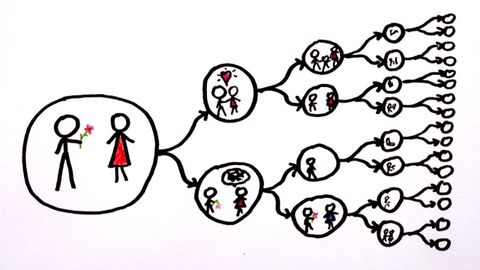
Subtitles & vocabulary
The True Science of Parallel Universes
00
何平平 posted on 2013/05/02Save
Video vocabulary
test
US /test/
・
UK /test/
- Verb (Transitive/Intransitive)
- To be given a medical examination
- To try to establish the truth or nature of
- Noun
- A medical examination
- Action to establish the truth or nature of
A1
More kind
US /kaɪnd/
・
UK /kaɪnd/
- Adjective
- In a caring and helpful manner
- Countable Noun
- One type of thing
A1TOEIC
More black
US /blæk/
・
UK /blæk/
- Transitive Verb
- To fill in something to make it a very dark color
- Adjective
- Color of the sky on a dark night
A1
More newspaper
US / ˈnuzˌpepɚ, ˈnjuz-/
・
UK /ˈnju:zpeɪpə(r)/
- Countable Noun
- Sheets of paper (or online) containing the news
A1
More Use Energy
Unlock All Vocabulary
Unlock pronunciation, explanations, and filters
